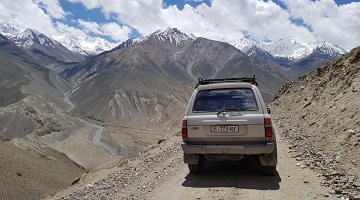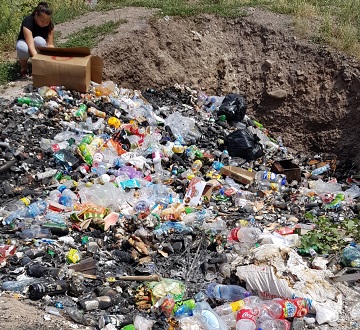 |
 |
|||||||||||||
|
Editorial Mountains and Hills
By Toh Hsien Min
South of Bishkek, as we began traversing Kyrgystan and then for the next nine days, the scenery continuously varied, ranging from jaw-dropping to the merely marvellous. We tried to work out how the Kara-Balta River produced the optical illusion of appearing to flow uphill, emerged from the Tor Ashuu Pass into the green jailoos of the yurt-dotted Suusamyr Valley, and gaped at the impossible blue of the Toktogul Reservoir. After Osh, We saw the switchbacks of the Taldyk Pass, then hiked up to the snowcaps of the Pamir Alay, foraging wild onions along the way. The twenty kilometres of no-man's-land at the Kyzyl-Art Pass between Kyrgyzstan and Tajikistan seemed a desperation of desolation if not for the odd Mongolian finch and golden marmot, and then the road sloped down to the austere beauty of Karakul - the Black Lake - its frail village standing like one of the last human settlements after the apocalypse. We ascended along the gravelled Pamir Highway looking all the darker for the blazing white cloaking the slopes on all sides of the 4,655m Ak-Baital Pass, kept our spirits up in the High Pamirs by knocking back vodka chilled by sticking its glass bottle into unmelted banks of snow, lost my sunglasses jumping around the wetlands of Bulunkul, and gasped at both the mountain reflected off the obsidian mirror of the Ozero Chukur-Kul' and the bright red zooplankton teeming at its edges. Then, descending into the Wakhan Valley, the three-and-a-half days we spent looking across the Panj River to the ruggedly sculptured slopes of Afghanistan even as we traced contour-hugging roads where two cars would struggle to pass each other nudged me into writing more poetry than I had done for a while.  It wasn't only my notebook that got filled; my camera's SD memory card also did. Yet in the midst of these photogenic mountains, one of the photos that stood out concerned a small mound that was man-made. Here it is:  About two weeks later, back at work but out at lunch, one of my colleagues posed our group a challenge: can anyone guess the number of plastic bottles that the Coca-Cola produces every year? By making some simple assumptions on the portion of the world's population that consumes Coca-Cola products and on the average consumption of each customer, I threw out the number of 100 billion bottles. "You're pretty spot on," my colleague said. Apparently the number is about 108 billion bottles, counted in 500ml equivalents. Again, with some simple arithmetic, assuming that the bottle capacities could be aggregated as volume while making the completely unrealistic assumption that there is no space to be filled between them, one could start at sea-level and build up a Fuji-mountain-esque right circular cone eight kilometres in diameter rising to 3 kilometres above sea level - or just about one-eighth the volume of the actual Mount Fuji - every year. How many plastic mountain ranges do we want to build? It's easy enough to get on the soapbox about this while leaving the problem to other people to solve, and indeed looking at the pile of plastic in the Naryn Valley I knew full well that when we switched cars to the 4WD the next day we would be stacking almost thirty plastic one-litre bottles of drinking water in the back to get us through a country where the tap water, where it exists, was unsafe for drinking. But now, back in Singapore, I do not have that excuse, and certainly not when I have a history of permanently changing my consumption habits in aid of some desired end. As such, short of health-related necessity as in Tajikistan, I have decided to cease buying beverages bottled in plastic in favour of those packed in more sustainable materials such as glass or recycled aluminium, or indeed making my own tea or citrus-or-herb-accented water, to take a personal part in cutting this mountain down to size. Won't you join me? This issue of QLRS felt a little different in its construction, although perhaps getting back from Central Asia smack in the week when our production cycle starts again could have had something to do with that. I was building a multi-poem trope across the candidate poems, but had to abandon that because of a simultaneous submission in spite of our guidelines, so unfortunately we have fewer poems than usual this time around - as with plastics, there are real impacts to one's choices! Other sections have shown more robust health though - we have a full-length interview with the newly appointed UK Poet Laureate, Simon Armitage, alongside some great essays and reviews (including one of Amanda Lee Koe's Delayed Rays of a Star, which has whole chunks on... making mountain films). We hope this issue proves to be a good read... and when you're finished do recycle it with your friends! QLRS Vol. 18 No. 3 Jul 2019_____
|
|
|||||||||||||
Copyright © 2001-2026 The Authors
Privacy Policy | Terms of Use |
E-mail